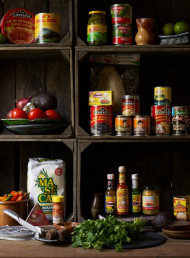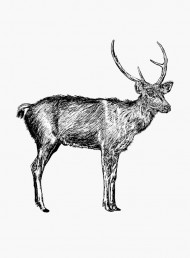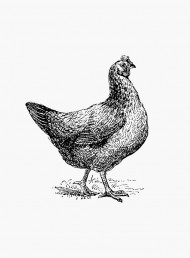A guide to meat: pork

A handy guide to cuts and simple cooking techniques.
SLOW COOKING CUTS
Hock or shank: the lower joint of the foreleg. Also known as the knuckle when smoked and cured. Lots of connective tissue, bone and tough-ish nuggets of meat, the hock is full of gelatine and flavour. It lends body and richness to dishes like cassoulet, and pea and ham soup. Cooked slowly in stock or braised, the meat should fall off the bone. Can also be roasted. See recipe for ‘Crisp Roasted Pork Hocks with Caramelised Onion Gravy’ pg 69.The fore shank just above the hock, when slow roasted or poached, is a tender cut also good for chunky pork pies, terrines, sausages, rillettes and pâté.
Cheek: Ask your butcher for these, as they can be hard to find. Cook slowly – poached in a bouillon or braised in the oven, cheeks are meltingly good. Serve hot with a sauce, or cold for supper with pickles and chutney. Essential when making brawn or pâté de tête.
Belly: from the underside of the pig, streaky bacon and pancetta are not its only virtues. The thick end makes for very good roasting as a large piece with great crackling. Try in a hotpot braised in stout, slice to thick strips for cassoulet, cure then simmer with Puy lentils, or rub with Asian spices and slow roast.
Trotters: pig’s feet may appear to be just skin and bone, but offer much more. Add to broths to enrich and thicken. Cooked with stock and vegetables for 3-4 hours, trotters become deliciously sticky, gelatinous and sweet. Can also be boned and stuffed, pan fried and caramelized, or the meat removed and added to game pie or brawn.
Forequarter/shoulder: a whole shoulder consists of the spare rib roast, blade and hand. Each piece is usually butchered and sold separately. A square-cut shoulder (pictured) can be roasted with the bone in, or cut to fore loin chops. When boned it’s delicious rolled, stuffed and roasted.
ROASTING CUTS
Leg/ham: a huge piece of meat usually brined for ham, and baked and glazed for special occasions, or cured for making prosciutto or air-dried hams. Take care though, the leg meat is lean and can dry out easily so gentle roasting is best with a final burst of heat to set the crackling.
Loin/rack: the ultimate pork roast made up of eight to ten ribs cut from the shoulder down, and the loin. The ribs are often ‘Frenched’ which means trimmed of any extra fat and meat. Boned out, the loin is superb stuffed and roasted. Cook slowly with aromatics like sage and apples or sauerkraut.
Scotch fillet: from the rib tenderloin, which can be prepared whole, both boned or de-boned, and cut into chops for pan-frying. Another slow roasting cut also good for pot-roasting or butterflied out to stuff.
Spare ribs: From the bottom of the ribs, just above the belly. Marinate in honey and soy and barbecue or roast.
FAST COOKING CUTS
Fillet/medallions/tenderloin: the pork equivalent to fillet steak is lean and tender, so susceptible to drying out and toughening. Excellent for Asian stir-fries, sliced thinly into escalopes, pan-fried and served with a sauce, or minced for laab, dumplings or Italian meatballs. Noisettes are cut more thickly and rounder than escalopes, trimmed of fat and pan-fried; they need a good sauce for moisture too.
Cutlets: either from the middle portion of the loin without the bone, or the middle of the leg where they are leaner but less tender. Sautéed, grilled or braised they can be dusted in flour or bread-crumbed before cooking. Cook quickly, even when braising, so they don’t toughen.
Back fat: ask your butcher for this firm, moistening fat for making sausages, black pudding, salami, or for wrapping very lean meat to keep it moist (barding). It’s the fat from the back, flank, ham and shoulder of the pig just underneath the skin.
latest issue:
Issue #120
As the days become shorter, and the nights cooler, the latest issue is perfectly timed to deliver delicious autumn dishes. From recipes using fresh seasonal produce such as feijoas and apples, to spectacular soothing soups and super-quick after-work meals in our Food Fast section, we’ve got you covered. With Easter on the horizon, we feature recipes that will see you through breakfast, lunch and dinner over a leisurely weekend holiday, and whip up chocolatey baking treats sure to please. We round up delicious dinners for two and showcase a hot new Korean cookbook before heading south to Dunedin to check out all that’s new in food and dining.The latest issue of dish is on sale NOW at all good bookstores and supermarkets – don’t miss it!





